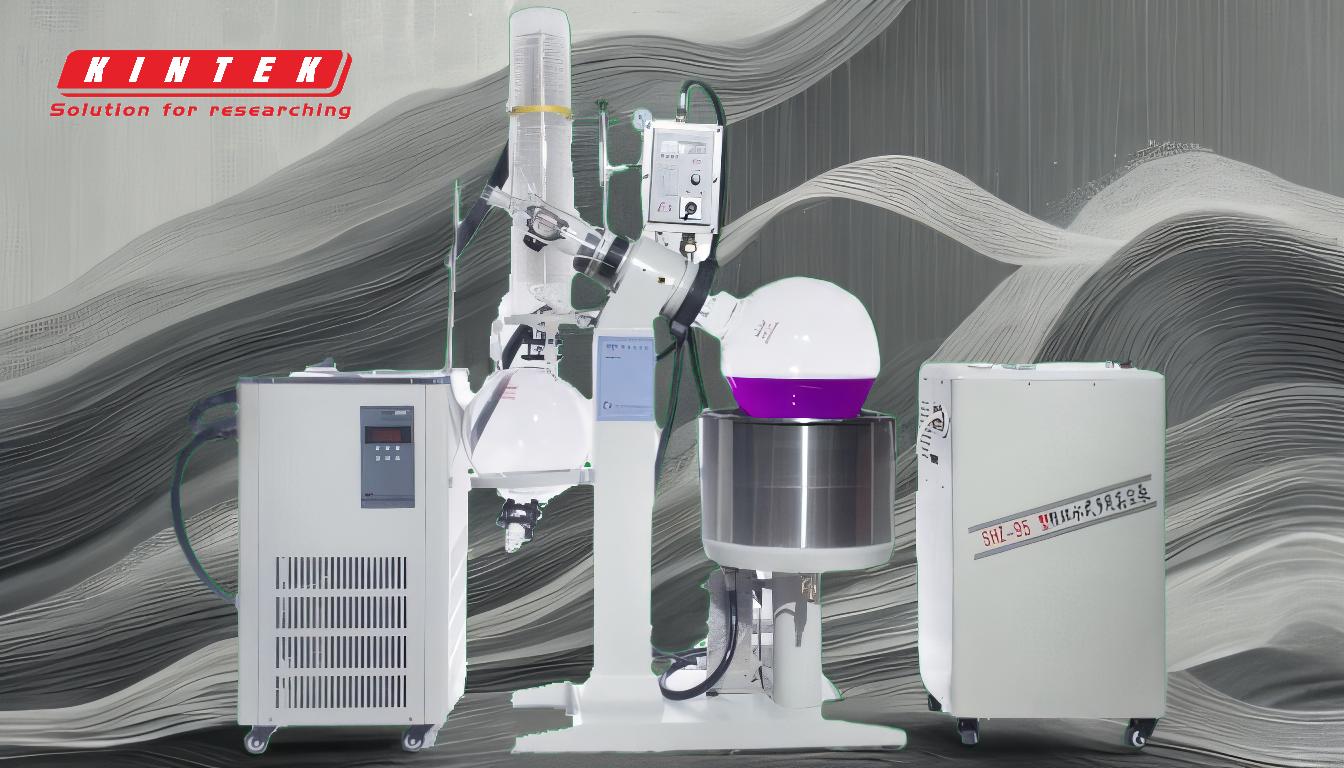The boiling point of ethanol in a rotary evaporator is influenced by the applied vacuum, which significantly lowers the boiling point compared to its standard boiling point of 78.37°C at ambient pressure. In a rotary evaporator, the boiling point of ethanol can be reduced to around 25–30°C under specific vacuum conditions. For instance, ethanol boils at 30°C under a pressure of 123 mbar and at 25°C under 95 mbar. The water bath temperature is typically set about 20°C higher than the desired vapor temperature to ensure efficient evaporation and solvent recovery. The condenser temperature is set about 20°C lower than the vapor temperature to ensure effective condensation.
Key Points Explained:

-
Effect of Vacuum on Boiling Point:
- In a rotary evaporator, the application of a vacuum reduces the boiling point of ethanol. This allows ethanol to evaporate at a much lower temperature than its standard boiling point of 78.37°C at ambient pressure.
- The reduction in boiling point is due to the lower pressure environment, which decreases the energy required for the solvent molecules to transition from the liquid to the gas phase.
-
Recommended Vapor Temperature:
- The recommended vapor temperature for ethanol in a rotary evaporator is typically between 15-20°C. This range is chosen to prevent solvent loss and ensure efficient recovery.
- Boiling ethanol at 30°C requires a pressure of 123 mbar, while boiling at 25°C requires a pressure of 95 mbar. These conditions are achievable with the vacuum system of a rotary evaporator.
-
Water Bath Temperature:
- The water bath temperature is usually set about 20°C higher than the desired vapor temperature. For ethanol, if the target vapor temperature is 25°C, the water bath would be set to around 45°C.
- This temperature difference ensures that the ethanol is heated sufficiently to evaporate at the reduced boiling point while avoiding excessive heat that could lead to solvent loss or degradation.
-
Condenser Temperature:
- The condenser temperature is set about 20°C lower than the vapor temperature to ensure effective condensation of the evaporated ethanol. For a vapor temperature of 25°C, the condenser would be set to around 5°C.
- This temperature setting helps in efficiently recovering the ethanol vapor back into liquid form, minimizing solvent loss.
-
Practical Example:
- For ethanol extraction, the chiller is typically set to around 0°C, and the bath temperature is usually about 50°C. This setup aligns with the 20/40/60 rule, which suggests setting the bath temperature about 20 degrees higher than the desired vapor temperature and the condenser temperature about 20 degrees lower.
- This configuration ensures that the ethanol is evaporated and condensed efficiently, with minimal loss and optimal recovery.
-
Energy and Time Efficiency:
- Lowering the boiling point of ethanol through vacuum application not only prevents thermal degradation but also saves time and energy during the evaporation process. This is particularly beneficial in laboratory settings where multiple samples may need to be processed.
By understanding these key points, one can effectively set up a rotary evaporator for ethanol extraction, ensuring efficient and safe solvent recovery. The interplay between vacuum pressure, vapor temperature, water bath temperature, and condenser temperature is crucial for optimizing the process.
Summary Table:
| Parameter | Value |
|---|---|
| Standard Boiling Point | 78.37°C at ambient pressure |
| Boiling Point Under Vacuum | 25–30°C (95–123 mbar) |
| Water Bath Temperature | 20°C higher than vapor temperature |
| Condenser Temperature | 20°C lower than vapor temperature |
| Recommended Vapor Temp. | 15–20°C |
| Practical Example | Bath: 50°C, Chiller: 0°C |
Need help optimizing your rotary evaporator setup? Contact our experts today for personalized guidance!














